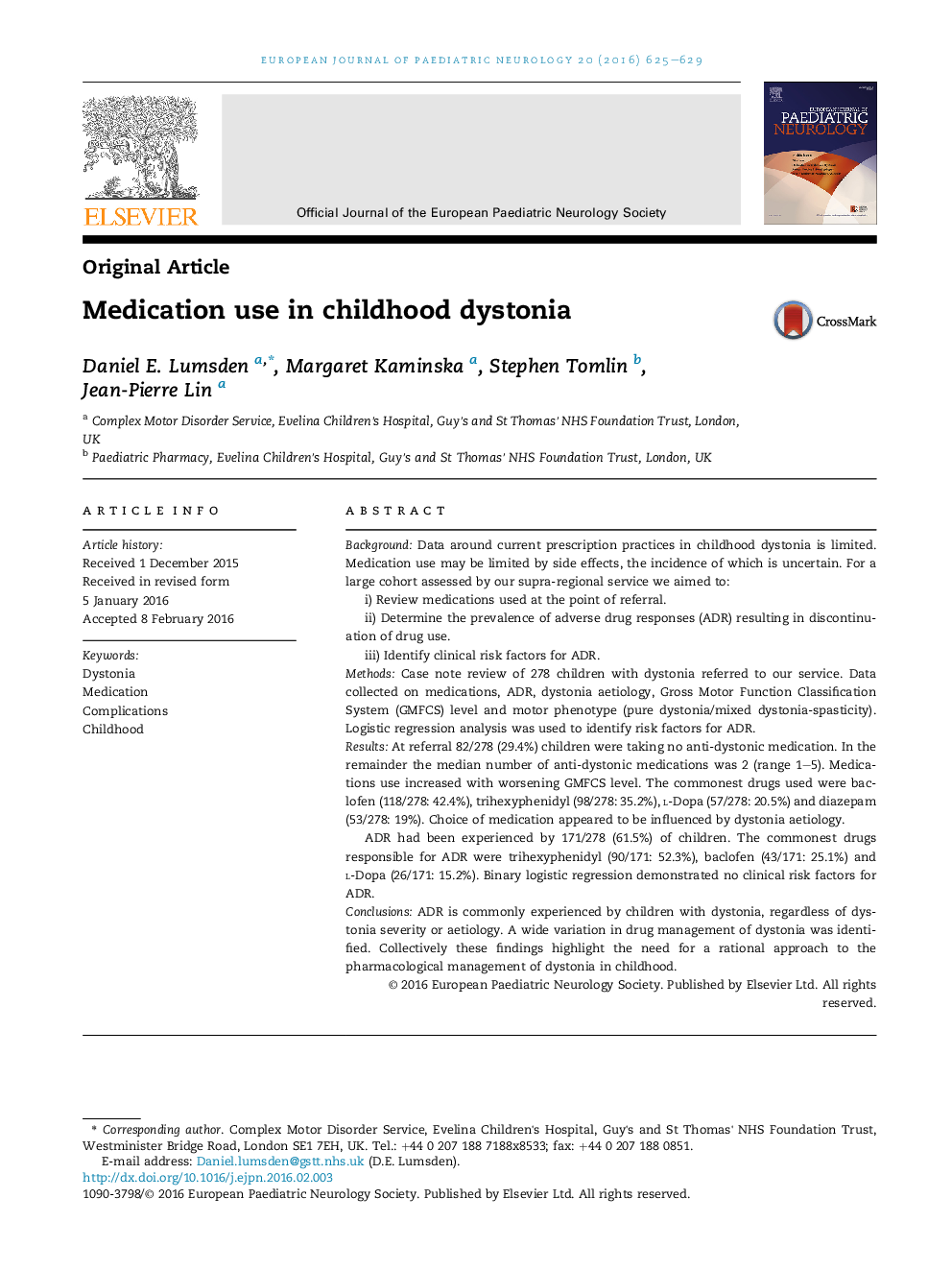| کد مقاله | کد نشریه | سال انتشار | مقاله انگلیسی | نسخه تمام متن |
|---|---|---|---|---|
| 6016481 | 1580006 | 2016 | 5 صفحه PDF | دانلود رایگان |
- Anti-dystonic medication use is reported in a cohort of 278 children and young people with dystonia.
- Adverse drug responses had been experienced by 171/278 children and young people with dystonia.
- The commonest drugs used in the treatment of dystonia were baclofen (118/278) and trihexyphenidyl.
- Choice of medication appeared to be influenced by dystonia aetiology and co-incidence of spasticity.
- No clinical risk factors for adverse drug response were identified.
BackgroundData around current prescription practices in childhood dystonia is limited. Medication use may be limited by side effects, the incidence of which is uncertain. For a large cohort assessed by our supra-regional service we aimed to:i) Review medications used at the point of referral.ii) Determine the prevalence of adverse drug responses (ADR) resulting in discontinuation of drug use.iii) Identify clinical risk factors for ADR.MethodsCase note review of 278 children with dystonia referred to our service. Data collected on medications, ADR, dystonia aetiology, Gross Motor Function Classification System (GMFCS) level and motor phenotype (pure dystonia/mixed dystonia-spasticity). Logistic regression analysis was used to identify risk factors for ADR.ResultsAt referral 82/278 (29.4%) children were taking no anti-dystonic medication. In the remainder the median number of anti-dystonic medications was 2 (range 1-5). Medications use increased with worsening GMFCS level. The commonest drugs used were baclofen (118/278: 42.4%), trihexyphenidyl (98/278: 35.2%), l-Dopa (57/278: 20.5%) and diazepam (53/278: 19%). Choice of medication appeared to be influenced by dystonia aetiology.ADR had been experienced by 171/278 (61.5%) of children. The commonest drugs responsible for ADR were trihexyphenidyl (90/171: 52.3%), baclofen (43/171: 25.1%) and l-Dopa (26/171: 15.2%). Binary logistic regression demonstrated no clinical risk factors for ADR.ConclusionsADR is commonly experienced by children with dystonia, regardless of dystonia severity or aetiology. A wide variation in drug management of dystonia was identified. Collectively these findings highlight the need for a rational approach to the pharmacological management of dystonia in childhood.
Journal: European Journal of Paediatric Neurology - Volume 20, Issue 4, July 2016, Pages 625-629
